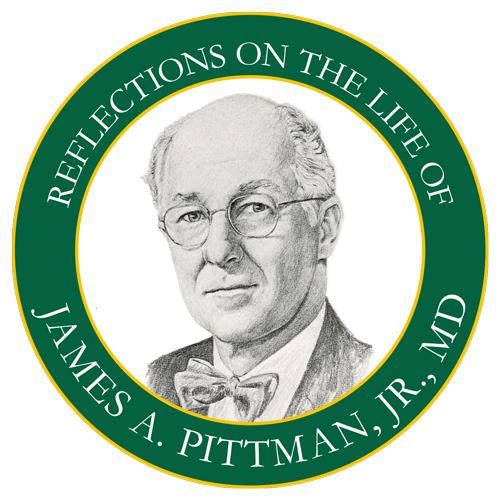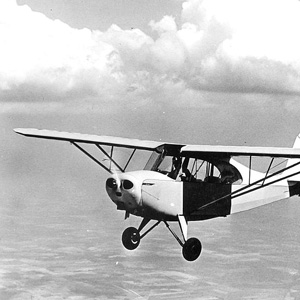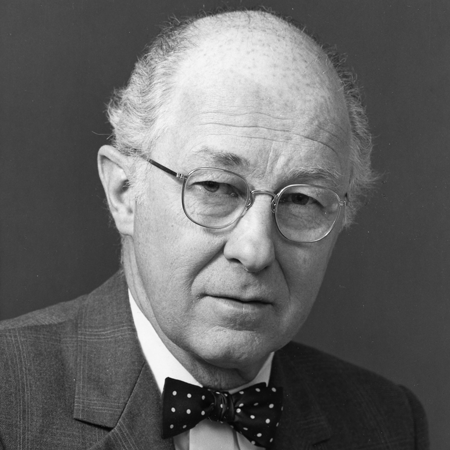 In the 1930s and ‘40s, Orlando had a population of about 25,000 and was a near-perfect place for two boys who loved the outdoors. Our family had a small cabin on Lake Conway nine miles south of Orlando, and we spent many happy hours hiking and camping with our dogs in the miles of unposted land. Jim, who was five years older, introduced me to duck hunting and to the field of ornithology. He procured a special license from the state to shoot small birds and make study skins of them, acquiring quite a collection.
In the 1930s and ‘40s, Orlando had a population of about 25,000 and was a near-perfect place for two boys who loved the outdoors. Our family had a small cabin on Lake Conway nine miles south of Orlando, and we spent many happy hours hiking and camping with our dogs in the miles of unposted land. Jim, who was five years older, introduced me to duck hunting and to the field of ornithology. He procured a special license from the state to shoot small birds and make study skins of them, acquiring quite a collection.
Flying was a lifelong passion for Jim. He received his aviator’s license while a student at Davidson College, and I flew with him many times in a two-seat Aeronca Champion from an abandoned Army Air Force Base south of Orlando (which is now the Orlando International Airport). We often practiced landings and takeoffs on the deserted runways, dodging the stray steers that were pastured there. Jim liked thrilling stunts, including flying through a big, empty hangar; this was not one of my favorite maneuvers. He also enjoyed putting the plane into a spin and pulling out at the last minute.
 His first published article resulted from a flying trip when he was a student at Davidson. He clocked a loon in a dive of more than 100 mph and reported it to the Auk, an old and respected ornithology magazine. It was his first published paper, and he was very proud of it.
His first published article resulted from a flying trip when he was a student at Davidson. He clocked a loon in a dive of more than 100 mph and reported it to the Auk, an old and respected ornithology magazine. It was his first published paper, and he was very proud of it.
I still recall a harrowing experience: Jim came home from North Carolina at Christmas and was anxious to go flying. It was late afternoon; the sky was overcast and Jim wanted to fly through the cloud cover. We had no instruments, but we flew through the clouds and emerged in a clear world at 9,000 feet. I noticed that the sun was disappearing behind the clouds. Jim throttled back to idle. It was very quiet and peaceful – until the engine stalled. Jim had once seen a stunt pilot put his stalled plane in a dive, after which the propeller turned and the engine started. He tried it without success as we dove through the thick clouds. When we came out of the cloud cover, it was getting dark and we were over a big swamp. We finally spotted some open ground near a small house, and managed to squeeze the plane in between two pine trees. The farmer and his wife were surprised, but friendly. Jim flew the plane back to the airport; I hitchhiked back to town.
 Years later, Jim eventually bought an old Stearman, the king of the old stunt planes, and kept it t a small airport outside of Birmingham. I never got up the nerve to fly with him in an airplane famous for being capable of performing stunts. After Jim’s first stroke, one of his sons built a ladder so that he could get into the plane and still fly. He also owned a vintage Harley-Davidson motorcycle with an old suicide gearshift, but I don’t believe he rode it much.
Years later, Jim eventually bought an old Stearman, the king of the old stunt planes, and kept it t a small airport outside of Birmingham. I never got up the nerve to fly with him in an airplane famous for being capable of performing stunts. After Jim’s first stroke, one of his sons built a ladder so that he could get into the plane and still fly. He also owned a vintage Harley-Davidson motorcycle with an old suicide gearshift, but I don’t believe he rode it much.
Shortly after the end of World War II, our father bought us a lovely 17-foot Old Town canoe. I remember excursions down the Withlacoochee, Econlockhatchee, and St. Johns rivers. Our most memorable trip was a four-day paddle down the Suwannee River to the mouth of the river at the Gulf of Mexico. We discovered a pristine spring emptying out to the Suwannee in a crystal clear stream. We swam in the spring alongside fish and turtles. This spot is now called Manatee Springs and is a Florida state park. The canoe trips are among my fondest memories.
We discovered a nest of red-shouldered hawks in a tall pine tree not far from our camp on Lake Conway. Jim trapped one of the baby hawks and kept him in a cage we built out of supplies from our father’s lumber yard. We named him Wilbur. Utilizing his license to shoot birds to make study skins, Jim shot a blue jay or crow every other day to feed Wilbur. He lived about two months on the birds. One day we decided to feed him some raw hamburger. The next day we found Wilbur dead in his cage.
There was a budding young biologist living in Orlando named Marshall Nirenberg who became one of Jim’s friends. They would take walks together through the woods and scrublands. On one hike, they captured a six-foot eastern indigo snake. Jim named him Junior and took him to school for show-and-tell. We kept Junior for two months, but could not find anything that he would eat. So Jim finally took him out in the country and let him go. Marshall went on to win a Nobel Prize in medicine.
 Between his third and fourth years at Harvard Medical School, Jim spent the summer in Newfoundland doing primary care medicine. He frequently told me how many teeth he extracted and how many deliveries he performed. I believe it was the only time (except for internship and residency) that he spent in clinical practice that was not also combined with research.
Between his third and fourth years at Harvard Medical School, Jim spent the summer in Newfoundland doing primary care medicine. He frequently told me how many teeth he extracted and how many deliveries he performed. I believe it was the only time (except for internship and residency) that he spent in clinical practice that was not also combined with research.
 The author, left, and his bride with Jim Pittman, 1968Although he was always interested in all aspects of medicine and endocrinology, his true love was the thyroid gland. He and I took time out to palpate my wife Barbara’s thyroid at our wedding in 1968 (see photo). I never attended one his classroom lectures, but I was often the recipient of one of his detailed private lectures. When the subject was thyroid physiology and pathophysiology, I learned a lot of useful information that I used both in my lectures to medical students and in my clinical practice. There were other times when I said to myself, “This is more than I need to know about aardvarks.”
The author, left, and his bride with Jim Pittman, 1968Although he was always interested in all aspects of medicine and endocrinology, his true love was the thyroid gland. He and I took time out to palpate my wife Barbara’s thyroid at our wedding in 1968 (see photo). I never attended one his classroom lectures, but I was often the recipient of one of his detailed private lectures. When the subject was thyroid physiology and pathophysiology, I learned a lot of useful information that I used both in my lectures to medical students and in my clinical practice. There were other times when I said to myself, “This is more than I need to know about aardvarks.”
He was always the big brother who felt, I think, a filial duty to watch out for his little brother. Although we lived far apart, he made a point of visiting my family and me at least once a year, and he called frequently. We shared our personal and professional problems. I miss him.
